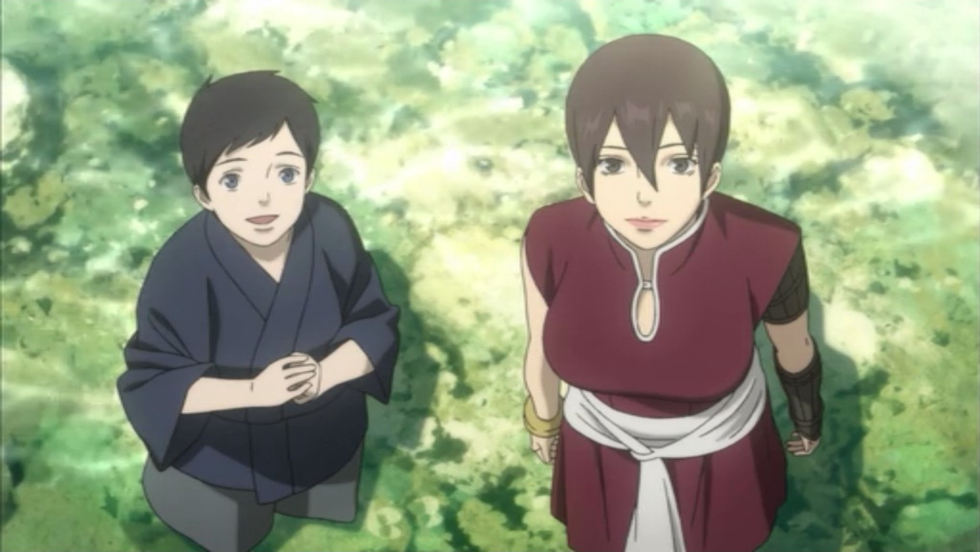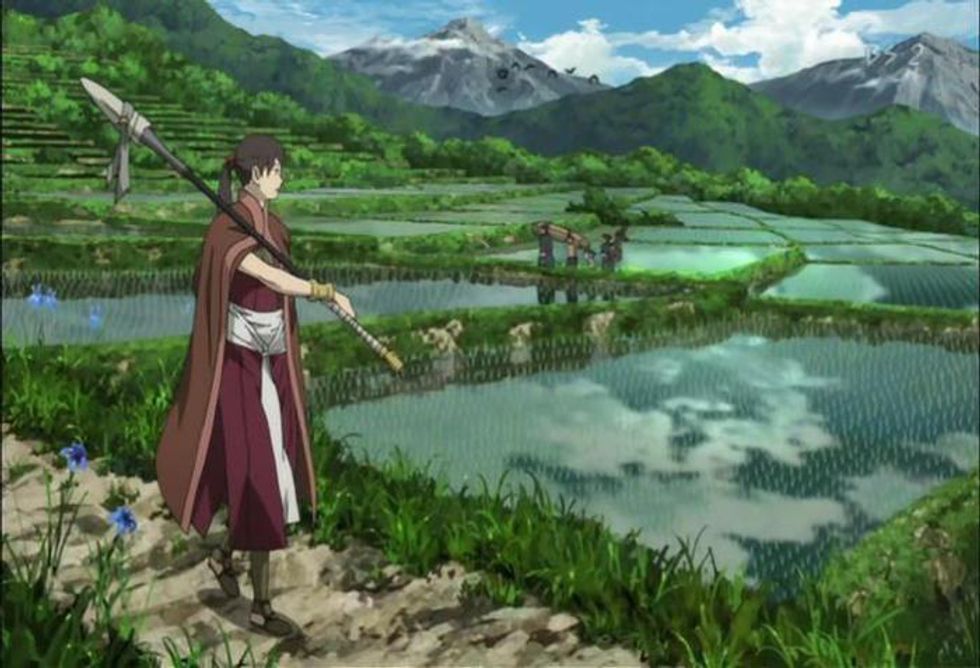Seirei no Moribito (or The Guardian of the Spirit in English) was off to an interesting start when it was announced that there would be an anime adaption of the Japanese fantasy novel series written by Uehashi Nahoko. Despite having its intended audience aimed toward children, its appeal made it quite popular with the general populace, allowing the series to become adapted into various forms of other media, including manga, radio, and a new live action drama. The 2007 anime made by Production I.G. focused and expanded on the events of the first novel in the series.
The story centers around the journey of a wandering female warrior named Balsa and the emperor's second son, Chagum. Chagum is suspected of being possessed by a water spirit demon, prompting the emperor and the imperial court to kill Chagum in order to prevent the demon from bringing a potentially cataclysmic drought to the country. The empress tasks Balsa to escape the palace with Chagum and to protect him from assassination.
Seirei no Moribito mixes things up with its main protagonist, Balsa, who works as a spear-wielding mercenary. What I found pleasantly surprising when I first started to watch Moribito was how Balsa was not a slim-figured, busty teenager like in most other fantasy anime. That may seem like an odd thing to be surprised by, but if you're someone who's tired of seeing female leads present in anime just for the fanservice, then Balsa is like a breath of fresh air. Balsa is far more realistic in her design and proportions. Her older and more muscular appearance makes her feel more like a seasoned warrior instead of simple eye candy out on the battlefield. More than that, it made me so happy to see an adult woman take the lead role in an anime and kick major butt.
Balsa is certainly a female character that really stands out from the crowd. She possesses grit, nerves of steel, a strong sense of responsibility, and honor, even toward her opponents. Nonetheless, she's not against getting her hands dirty in order to do whatever is necessary to protect Chagum.
Chagum deserves a pat on the back as a character, as
well. His status as a prince (or, rather, former prince) doesn't make him into
a snooty spoiled brat. Even when he is forced to become a runaway,
Chagum carries himself as a respectful, intelligent, and hard-working
kid right off the bat. Instead of complaining about his misfortune, he quickly adapts to
his new environment and learns what he can in order to survive. While
he struggles to cope with the “demon” housed inside him, it's
what propels him into discovering the relationship between man and
nature as well as his gradual growth in maturity.
The plot is primarily carried through the interactions between Balsa, Chagum, and the characters that they meet throughout their journey. The development of the emotional attachment between Balsa and Chagum on their adventure is the main highlight of the anime, as Balsa takes on the role of a secondary mother to Chagum and guides him through his new life experiences away from the palace.
Seirei no Moribito's origin as a low fantasy novel provides its setting and characters with an immense amount of thought and detail in which the anime uses to expand upon. The prevalence of South-East Asian influence in its mythology and setting enhances the sense of authenticity of the world of Moribito.The
aesthetic presentation of the setting is vibrant and consistent
throughout the entire series. Even the combat scenes favor more
realistic choreography instead of over-the-top action, like using flashy and overpowered moves to win. In Moribito, combatants use their environment
to their advantage, stealth to gain the upper hand, and rely on their
battle-hardened experience and skills to prevail.
Seirei no Moribito is an overlooked but very satisfying watch for those craving a different kind of coming-of-age narrative. The bonds developed between the cast of characters is the most gratifying and enticing part of the series. However, since Moribito was expanded from one novel into 26 episodes, you may need more patience to deal with the slower, laid-back pacing and dialogue-heavy scenes. And while the combat scenes are brilliantly executed, there is a lack of them present in the series in order to make room for the character interactions and development. In the end, it is the story of human growth, family, and nature that will not disappoint anyone curious enough to give it a chance.






















